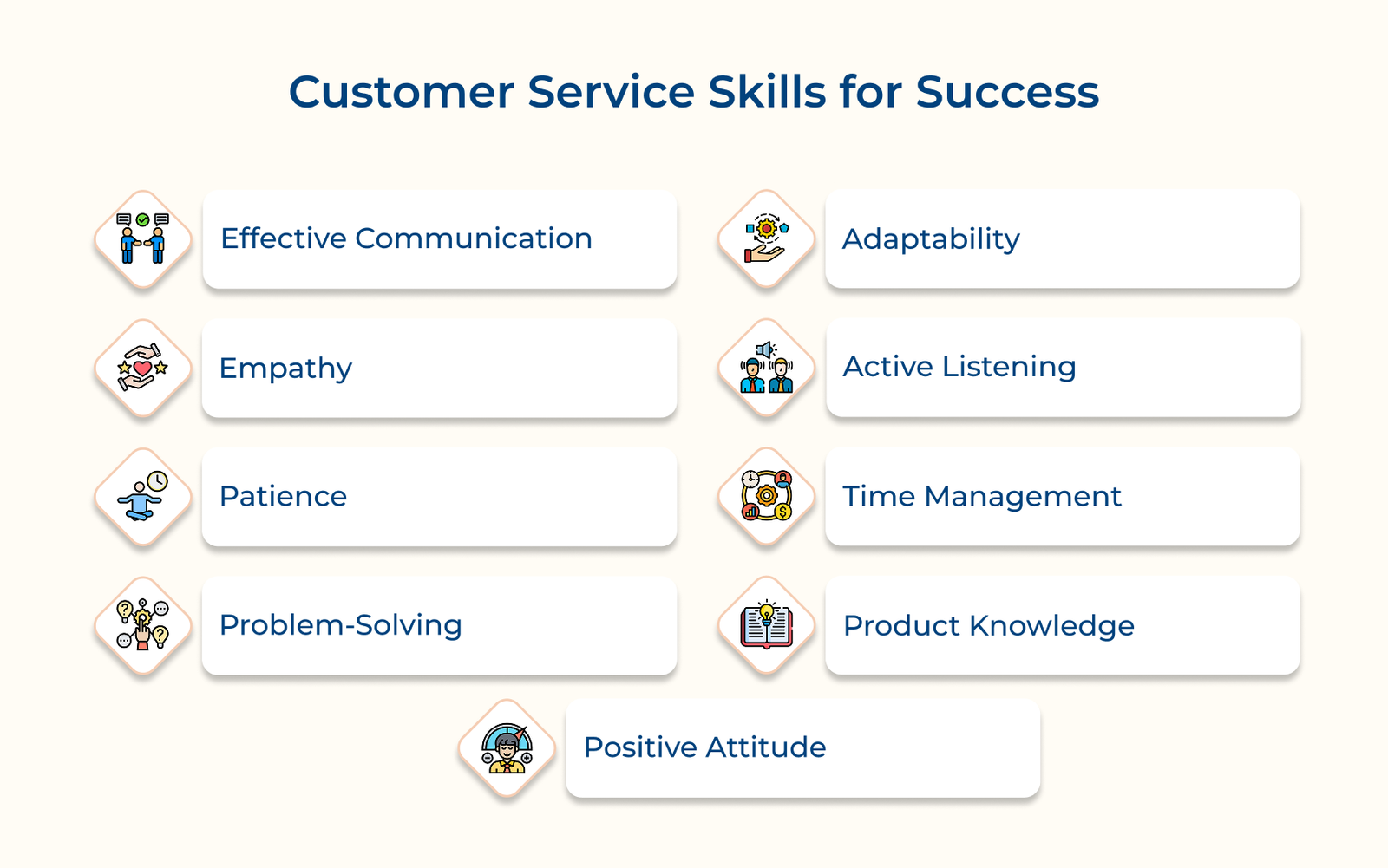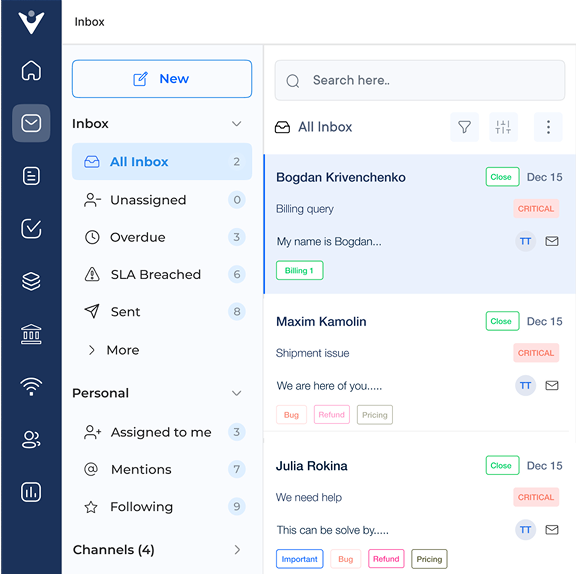1. Effective Communication
Good customer service starts with clear communication. It means listening closely, understanding what the customer needs and giving answers they can easily follow. Imagine a customer calls in with a question. The agent should listen patiently, ask clarifying questions and offer a solution that directly addresses the concern.
Pro tips:
- Use a warm, positive tone to make customers feel comfortable.
- Keep explanations simple and avoid technical terms.
- Show you’re listening by summarizing what the customer said before responding.
2. Empathy
Empathy means recognizing and understanding how a customer feels. It helps service teams connect on a human level, especially when emotions run high. Let’s consider that one of your customers is frustrated by a defect. An empathetic representative here should acknowledge their feelings before they present a solution.
Actionable tips:
- Imagine yourself in the customer’s place to see things from their perspective.
- Use simple, caring phrases that show you’re listening and understanding.
- Stay calm and genuine, even when situations are tense.
3. Patience
Patience is crucial in customer service, especially when working with upset or demanding customers. It means staying calm and attentive, even in stressful situations. A customer service rep should handle lengthy or repetitive inquiries with patience, addressing each concern and providing assistance.
Best practices:
- Take deep breaths or use stress-relief techniques to stay composed.
- Remember that some customers may be expressing frustration due to unrelated personal issues, so try not to take their frustration personally.
- Take short breaks when needed to maintain a calm attitude.
4. Problem-solving
Good customer service depends on solving problems effectively. It means understanding the issue, finding practical solutions and acting quickly. Imagine a customer service representative who digs deep to find the root cause of a complaint, weighs all possible solutions, and then presents the most effective way to resolve it. Such an approach can turn even the most frustrating experience into a moment of clarity and trust for the customer.
Key takeaways:
- Break down complex problems into smaller steps.
- Ask clarifying questions to fully understand the situation.
- Offer alternative solutions if the first doesn’t work.
5. Adaptability
Adaptability is about staying flexible when situations change. It means adjusting to different customer needs and unexpected circumstances. An example here can be of a representative who adjusts smoothly when a customer changes their request or chooses a different product.
Pro tips:
- Stay informed about products and policies to respond effectively.
- Be open to feedback and ready to adjust your approach.
- Keep a positive attitude and view change as a chance to improve.
6. Active Listening
Active listening shows customers that their concerns are taken seriously. It builds trust, improves understanding and helps provide better solutions. Instead of jumping straight to a solution, the representative should take the time to listen, understand the root of the problem, and address the real concerns behind the complaint.
Actionable tips:
- Give your full attention: Focus fully on the customer without distractions or interruptions to show you value their time and concerns.
- Show empathy and understanding: Step into the customer’s shoes, use empathetic phrases and acknowledge their feelings to validate emotions.
- Repeat and paraphrase: Repeat or paraphrase customer concerns to confirm understanding and show genuine interest in finding the best solution.
7. Problem-Solving
Problem-solving means identifying the real issue, working through possible solutions and acting quickly to resolve it. Imagine your customer service representative hears a complaint about a faulty product. They should first ask questions to understand the issue and then offer a replacement, a refund, or another solution that fixes the problem.
Best practices:
- Listen closely to fully understand the issue.
- Assess options and consider the customer’s perspective.
- Explain the chosen solution clearly and follow through.
8. Time Management
Good time management helps balance multiple tasks while giving customers timely support. It keeps service efficient and stress under control. Assume there’s a support agent managing dozens of inquiries. They’re tackling urgent cases first, planning responses and keeping everything organized. Such an approach will ensure every customer gets timely help without unnecessary delays.
Key takeaways:
- Prioritize tasks: Prioritize important tasks to handle urgent needs quickly.
- Plan and schedule: Plan your day with a to-do list or schedule.
- Delegate and automate: Delegate tasks to team members when exploring automation tools to streamline repetitive tasks.
9. Product Knowledge
Strong product knowledge builds confidence with customers and ensures accurate, helpful guidance. Let’s consider a rep walks a customer through laptops. He makes them aware of everything by breaking down performance, battery life and features in simple terms. It will help the customer understand the real differences and make an informed choice.
Pro tips:
- Learn the details and updates of your products.
- Ask questions and attend demos to deepen understanding.
- Practice explaining features in simple, clear language.
10. Positive Attitude
A positive attitude can turn a tense interaction into a constructive one. Staying calm, friendly and solution-focused reassures customers. When handling an angry caller, the representative must stay calm, listen carefully and show genuine empathy while focusing on finding a solution. It will help ease tension and keep the conversation productive.
Actionable tips:
- Approach each interaction as a chance to improve and learn.
- Listen patiently without rushing or interrupting.
- Focus on solutions rather than dwelling on problems.
Role of AI and Automation in Customer Service Skills
Check out the role of AI and automation in customer service skills, where smart tools enhance customer experiences.

















